BOOK EXTRACT
‘In the Shadow of the Springs I Saw’ – Stories and photographs from a distinctive Art Deco building
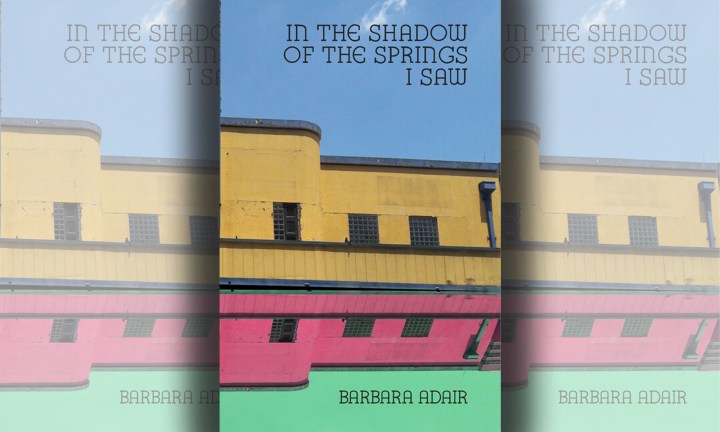
‘In the Shadow of the Springs I Saw’ is an exploration of people and the stories of their lives in the Art Deco buildings of Springs.
A conversation between two people about Springs, and then an observation as to the buildings and streets
Where are we going to?
Springs, the town on the East Rand.
Do you mean the season?
Ah, the season, Springs, it is a seasonal town.
The town, yes I do know it. I have been there, but it was a long while ago, an old gold mining town isn’t it.
A dead town.
No, Springs is growth, new growth, but in Springs it is now autumn.
It is a nothing space, a dead space, a dirty space.
There is a lot of trash in it, but look past the garbage at the Art Deco buildings, one of the best Western architectural styles.
Decorations decorate.
Art Deco, the birth of a flower; it was a movement of ideas, an architecture of buds; curls, swirls and newborn petals?
Springs, it is a cemetery.
That’s autumn, everything is dying.
It is a cemetery, this town, yet it is a distorted cemetery for the graves are filled with life.
The buildings are tombs, structures that house the dead. Watch the dead people, watch them move and dance. They are the waking dead, the walking dead.
Ah, a dead man coming out of a tomb is the best master of life for he knows its value.
The window panes are dirty, dust; the metal work does not shine.
Look, all the buildings face the sun, blue and red window panes turn towards the sun. There is value in a ray of light; it is the value of warmth.
There is a beauty in these buildings; illusion, existence and status; they all go together, they are not there, yet they exist and live again.
It’s a hell hole.
Things will always grow up again; the seeds of the dead are planted in Springs.
The people; Somalis, Ethiopians, and Nigerians, Pakistanis and Bangladeshis, they are the seeds now, their histories; their movement defines this space, they are the flowers that flourish. The Greek, the Portuguese, the Jew, the Italian, they walk the streets, they have no home here anymore, they make but a stain on a wall, indelible, their souls are here now.
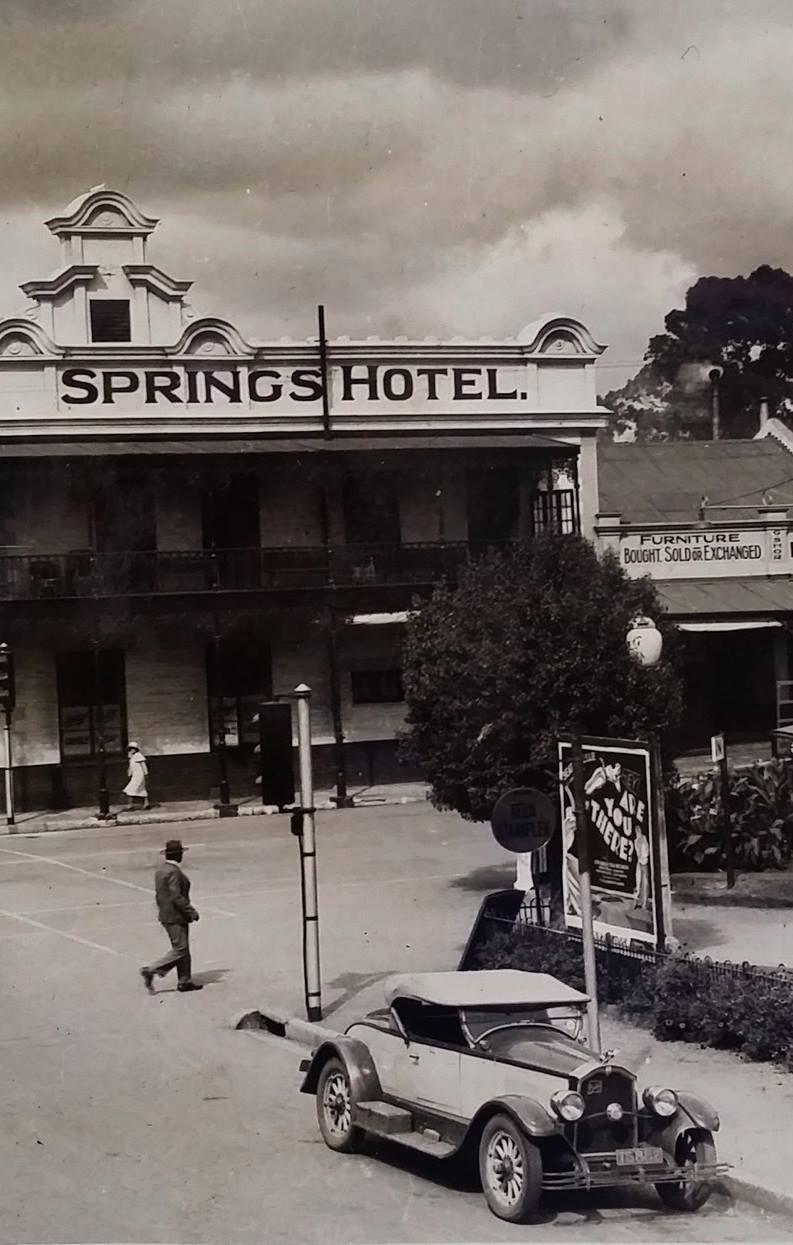
Springs as it was in what is possibly the 1960s. Image: Photographer unknown, supplied by Barbara Adair
Springs is an immigrant town.
It has always been an immigrant town.
We are afraid.
Of whom?
The dirt, it is dirty now.
Of what?
The ghosts, they are everywhere.
Who knew the beauty of the Art Deco architecture?
This is a dead town. It’s a ghost town.
Springs; this place is like somebody’s memory of a town.
And the memory is fading.
Ghosts are not real.
We are all ghosts.
Ghosts have no memory.
We have no memory.
We will remember through the spaces that are lived in.
What are we waiting for?
For it to be too late.
***
A Nigerian woman comes as a drug mule to South Africa and then remains in Springs working as a sex worker.
For many years I lived in Lagos. Banjoko, a slum area, want to know what this word, what Banjoko means in English, don’t ever leave me. Ha don’t ever leave me, you lucky if you can ever leave. Slum, what do I say, it is a slum, no it’s not something like a shanty town, it’s not a shanty town, it’s a slum. It is dirty, lots of garbage, white plastic bags that get caught in the fences, they look like small ghosts as they are white and the rest of the place is dark brown, and they always move cause it is windy, many brick houses, falling down, houses made of tin that are on fire as they are so hot. The sun beats on them and then they get hot and then the heat just stays inside. You can roast a chicken without lighting a fire if you leave it inside for an afternoon. We lived, my mother, brother and my two sisters in a brick house, but it is an old one.
My sister, she died when she was fifteen, killed by some gang member.
Ha, I can see your face, all Nigerians sell drugs. Well no, not all, only some do, like everywhere and everyone, and even the drug dealers, they are people too, even sometimes they feel sad and cry. It’s boring I know but they do have mothers and fathers and sometimes they love other people, care about them, and they get sick and die just like anyone else. Life is cheap, isn’t that what you say, easy to be born easy to die.
Life, if you are poor, is cheap. Anywhere. And if you are poor it’s easy to die.
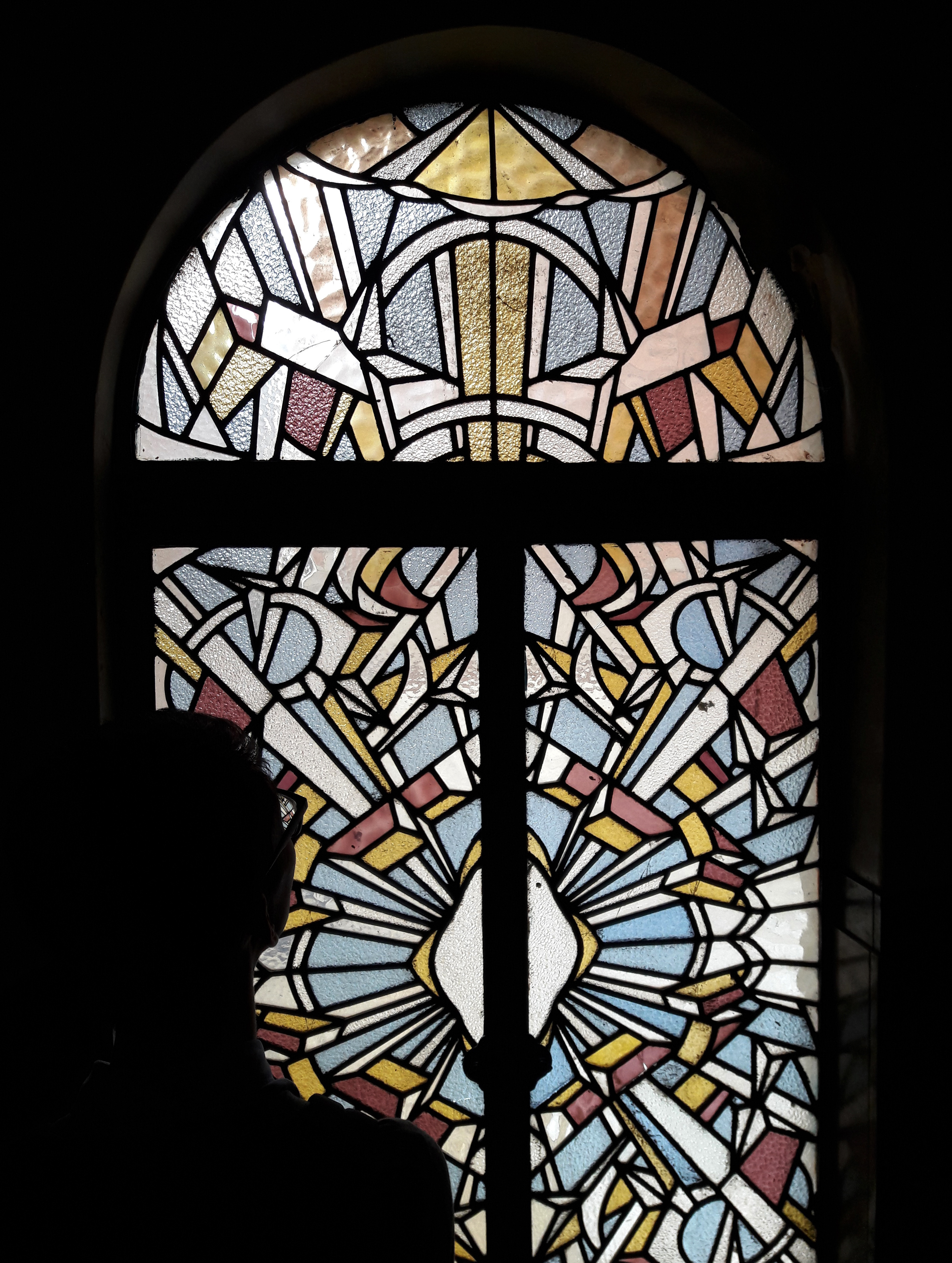
Stained glass window in Renesta House. Sreddy, my colleague, looks at it in wonder. Image: Barbara Adair and Sreddy Yen
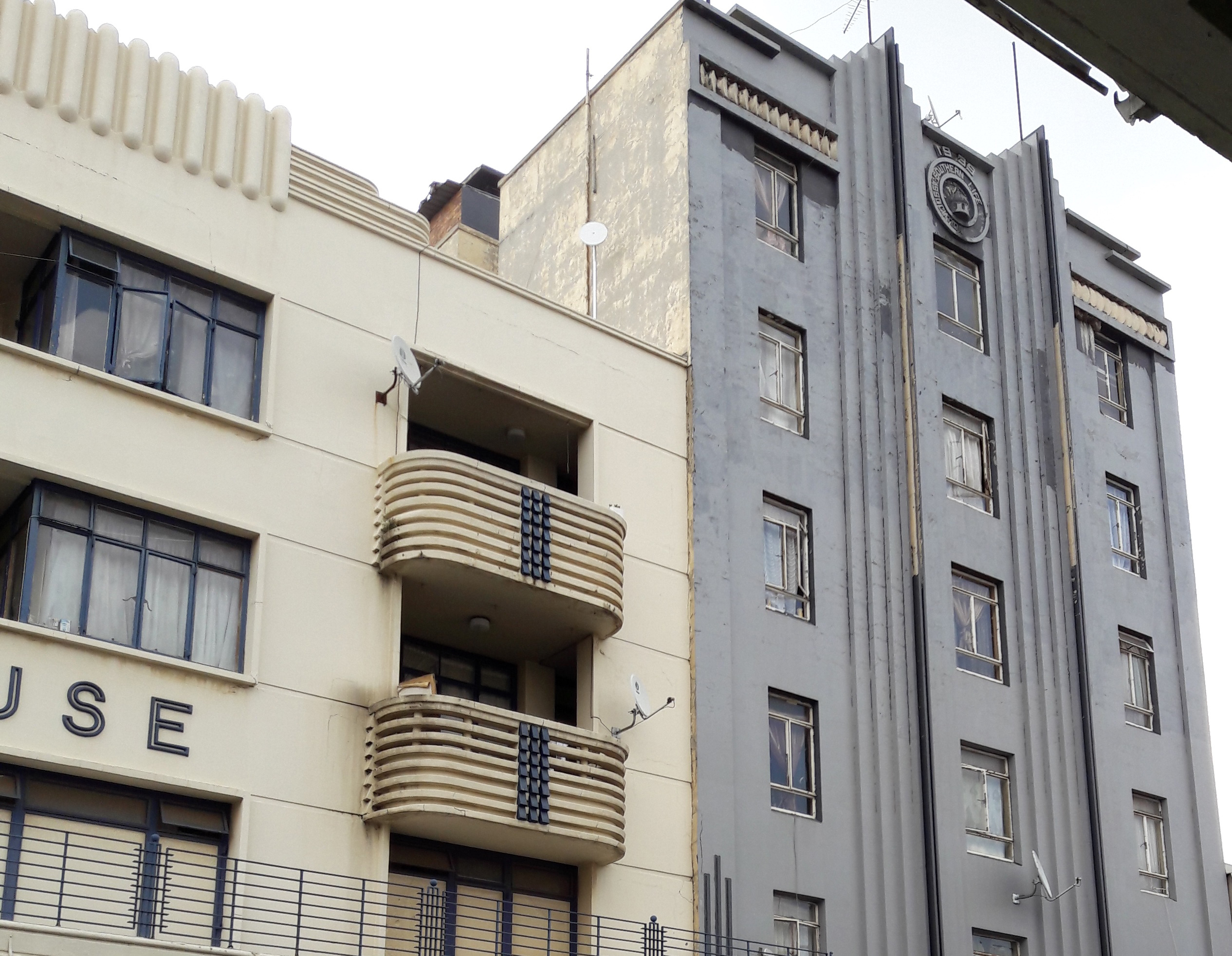
Façade of Renesta House. Image: Barbara Adair and Sreddy Yen
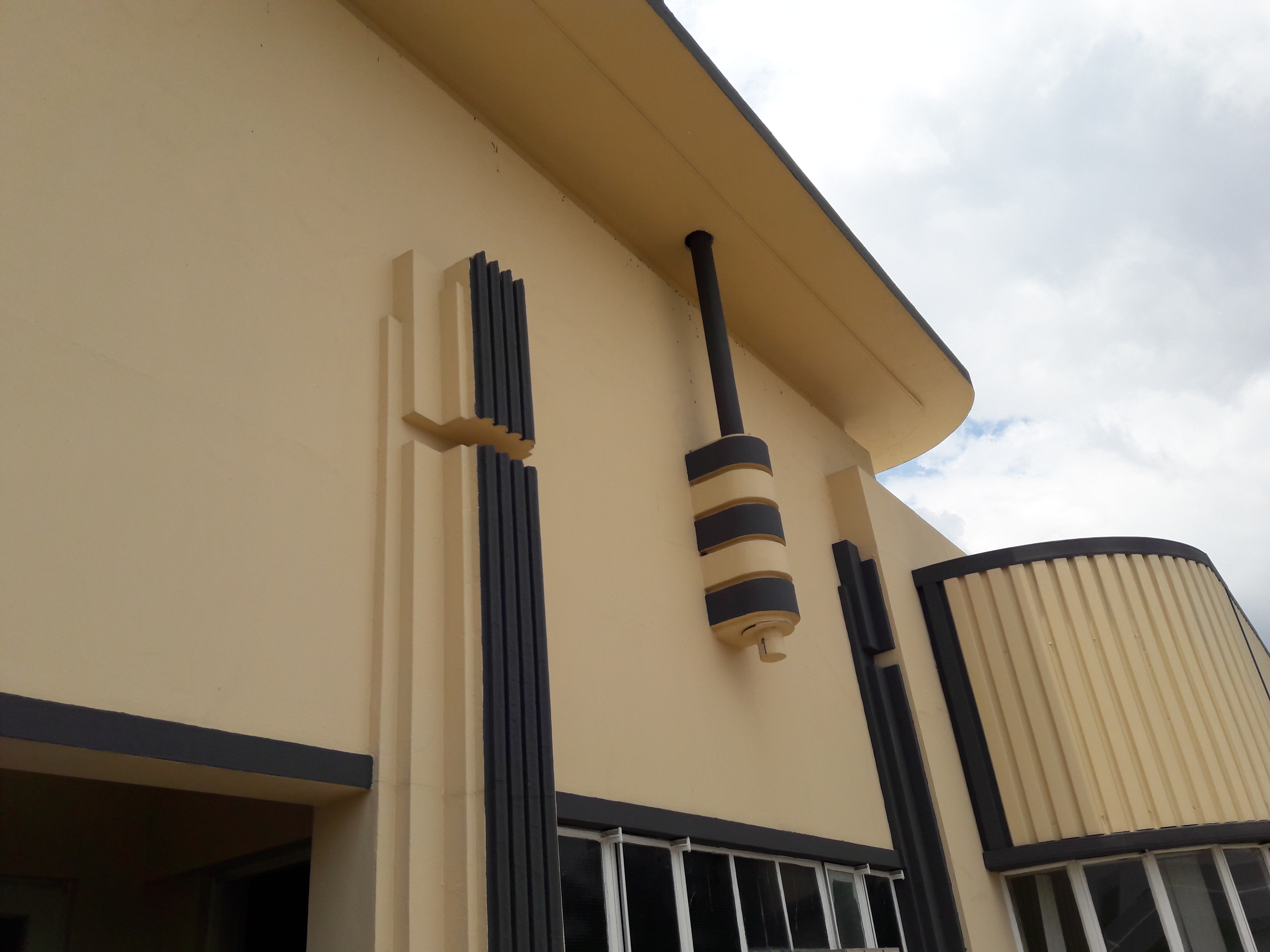
Façade of the Springs Fire Station. Image: Barbara Adair and Sreddy Yen
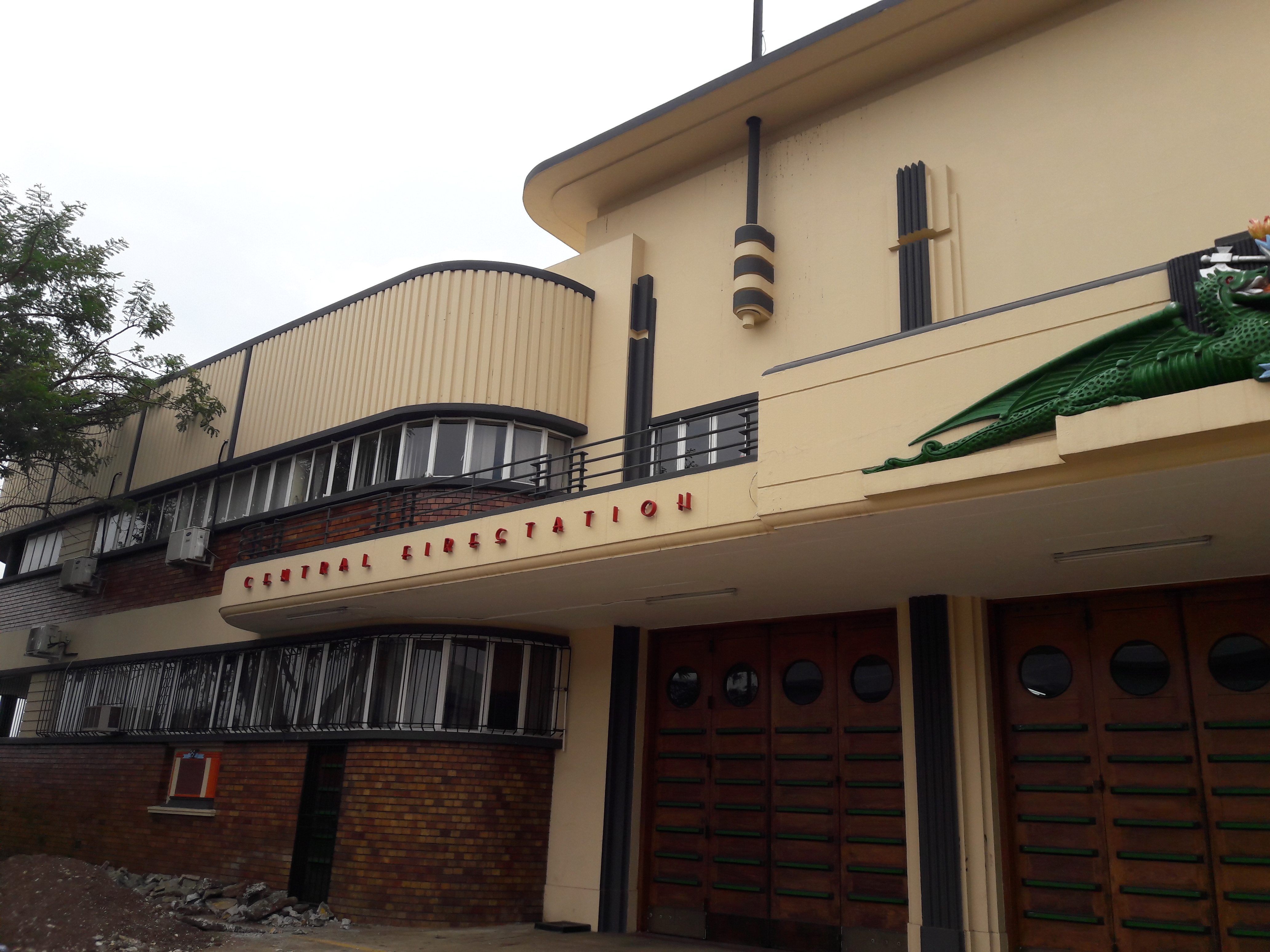
Façade of the Springs Fire Station. Image: Barbara Adair and Sreddy Yen
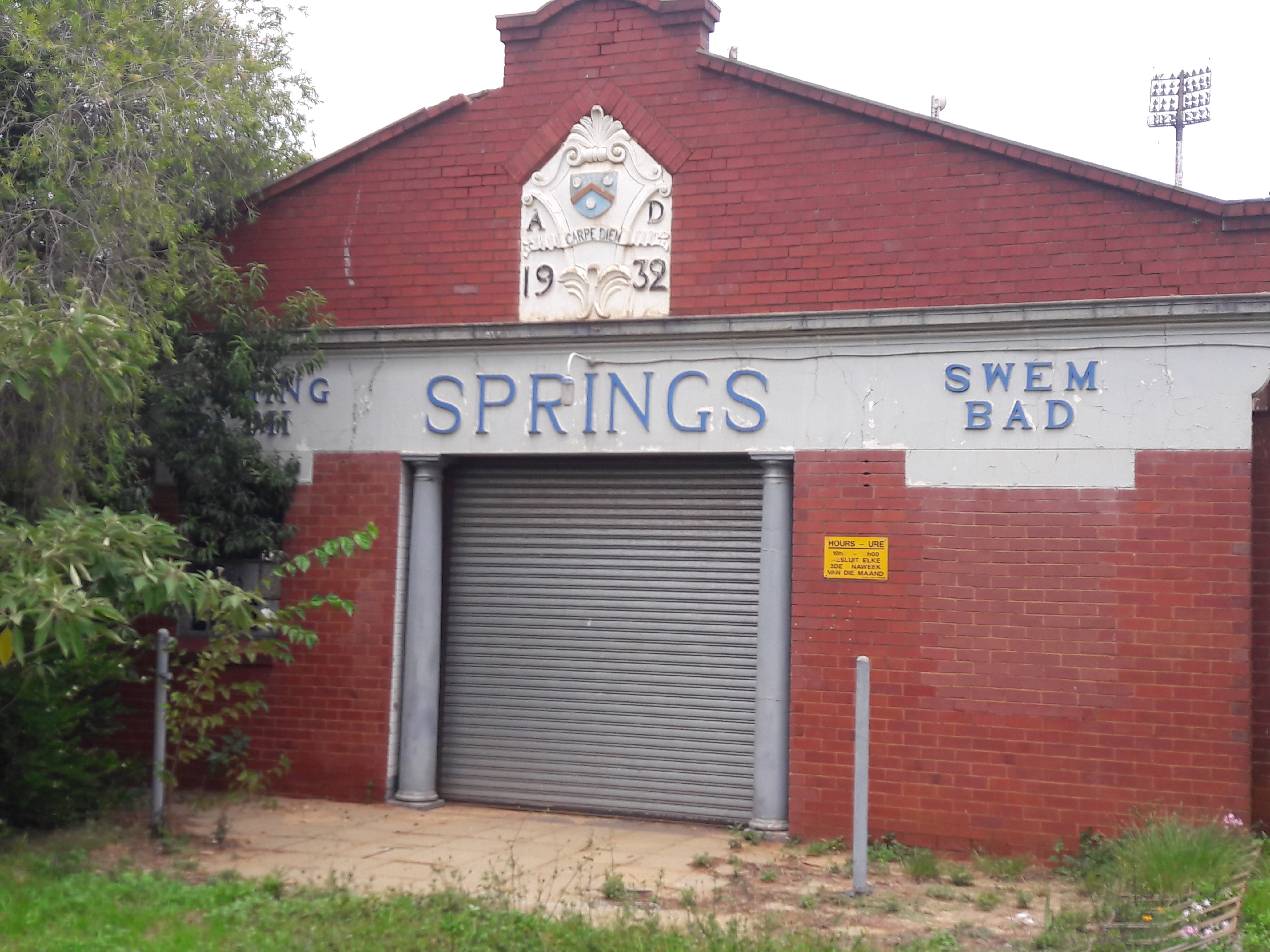
Entrance to Springs swimming pool and the park. Image: Barbara Adair and Sreddy Yen
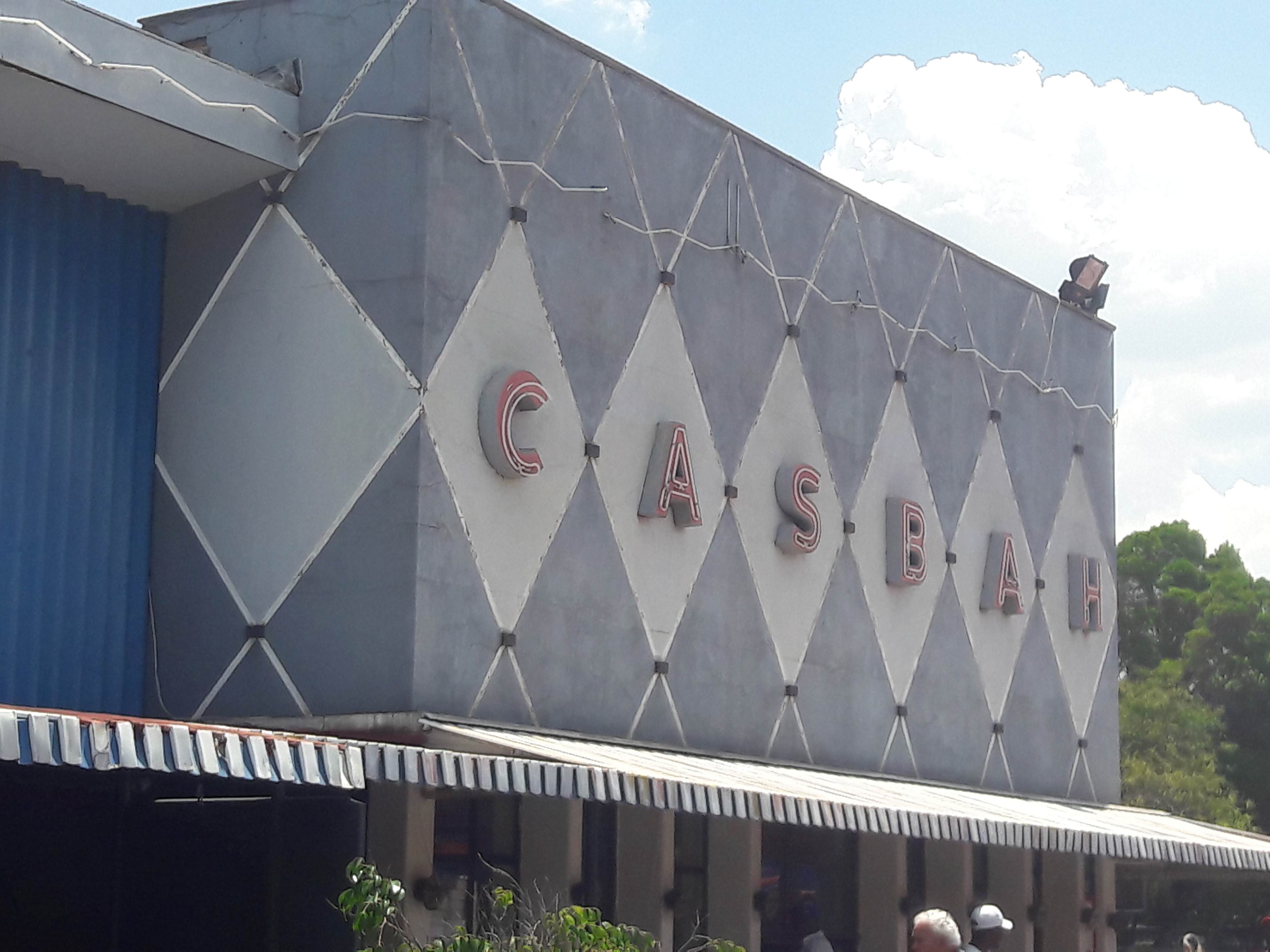
Outside signage of the Casbar Road House where we meet two old people, a man, who was medically boarded by the mine ERPM as he was ill from inhaling dust, and his wife who now live in Standerton with their daughter. Image: Barbara Adair and Sreddy Yen
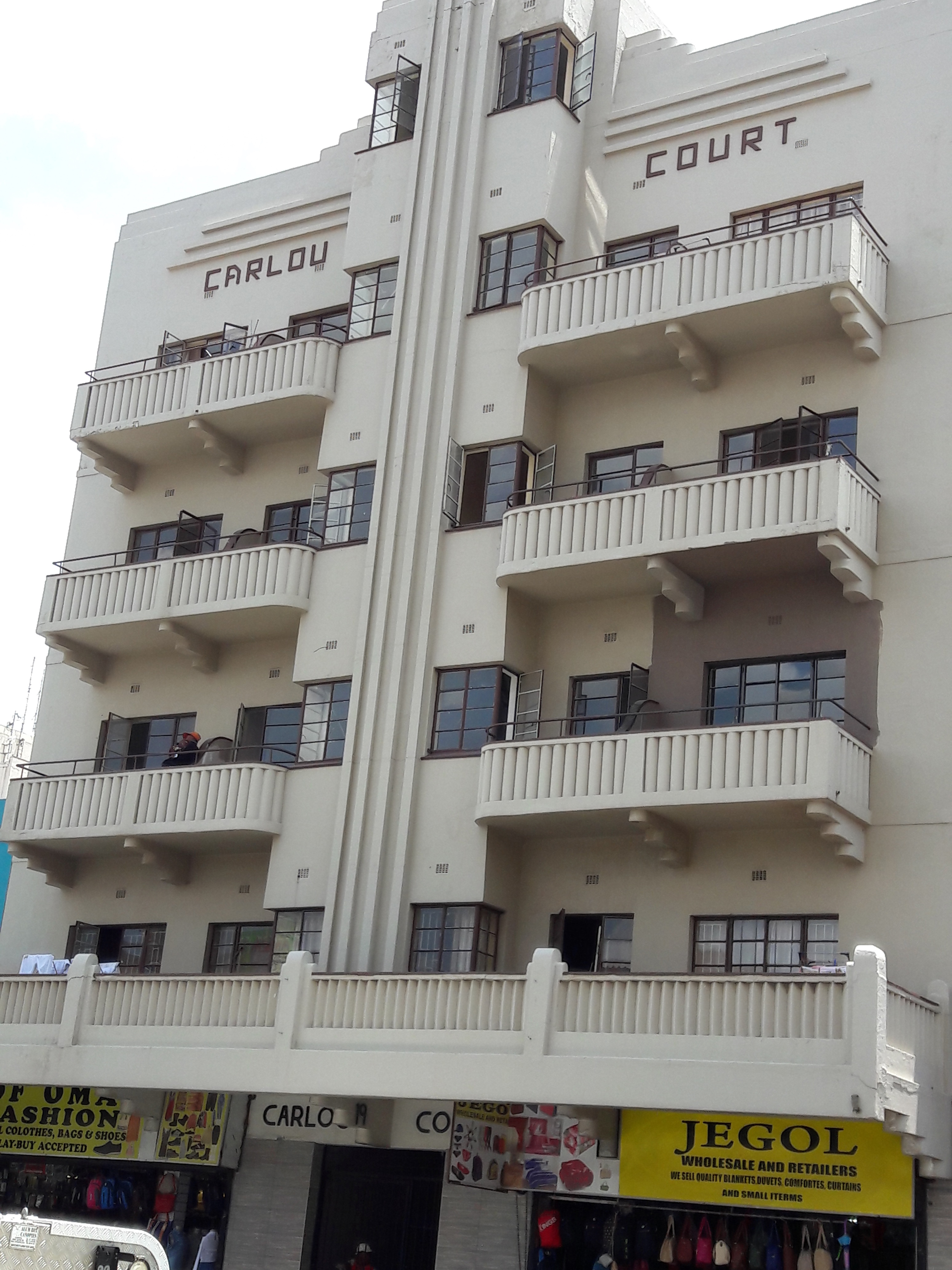
Façade of Carlou Court where many children live. Image: Barbara Adair and Sreddy Yen
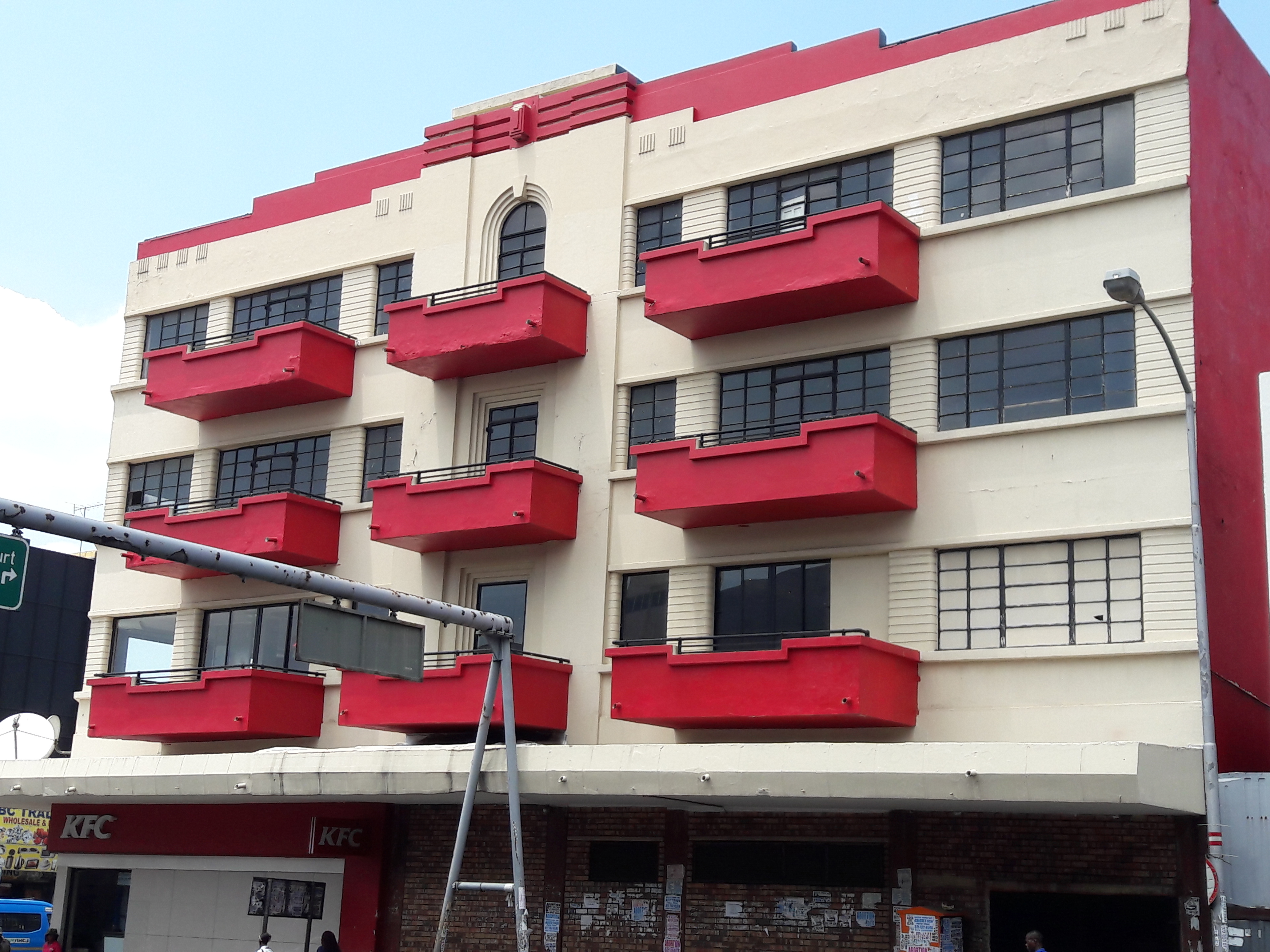
Outside façade of the unnamed building in which the Kentucky Fried Chicken outlet is and where the latch key kid’s mother works. Image: Barbara Adair and Sreddy Yen
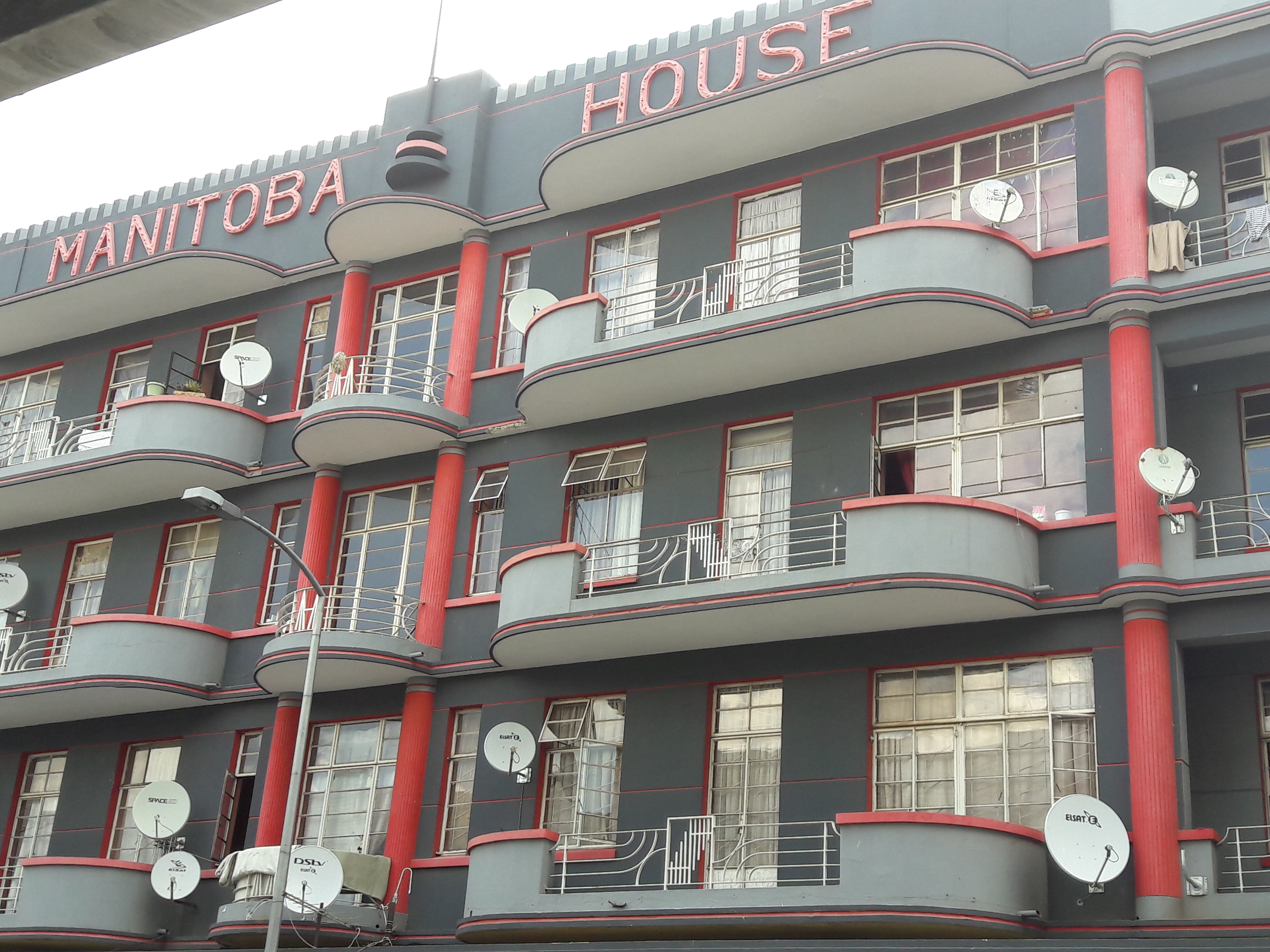
Façade of Manitoba House. Image: Barbara Adair and Sreddy Yen
My mother always said that there was a world outside Banjoko, somewhere far away. All I had to do was find it. She said I would find it in my dreams. But I didn’t want to just dream.
The trains came into the station only two times a day, but every time they came, or every time I watched, some of the people looked so elegant.
Then a man got off the train. He was very tall and I thought he was very handsome, but maybe this was just because he looked rich. He might be able to get me out of there, I thought. He was pitch black, not like me, I am brown, he was black. He was big, very big. He had a gold tooth in the front of his mouth, I think it was his left front tooth. It’s the fashion to have a gold front tooth, expensive too. He came to me and started to talk, we talked for a long time, then he took me to the station café for lunch, just a sandwich, I remember it was a goat’s meat sandwich; it had two pieces of tomato in it. He said we should be friends so I went with him to his friend’s place that was close by and had sex with him and he gave me some money. From that day I met him often; I think I knew that he would be that great bird that would lift me out of Banjoko. One day he said that if I take a package for him to South Africa I could stay there, he would get me a passport and a visa to go there and then after that what I did I did. He wanted to know nothing more.
And the package, all I had to do was put it at the bottom of my suitcase, near my wash bag and all the soap powder that I needed to wash my clothes for the journey. Then when I got there I would give it to a taxi driver who would come up to me and say something to me in Yoruba, iranti. Memory, iranti means memory, maybe he thought I would remember him so this is why he chose the word iranti as the code word, or maybe he knew that I would never come back so should always remember Banjoko.
He said I would be safe as he knew people in South Africa and that because of this they would not take me aside and search my bag.
I trusted him. He was my big, feathered bird.
I never knew his name.
He told me to meet him at the airport in three weeks and he would give me the air ticket and the money and the package.
What did I have to lose, only the daily walk down Sandayo road? I did not want all my journeys to take place on the Sandayo road, I did not want my journeys to be just up and down the Sandayo road because this route never changes.
Of course I knew that I was taking drugs. Of course I know that I am the Nigerian story, the one, the only Nigerian story that you all know, but there is more to me you know, there are more stories that I can tell you. I am not just one story. What do you want to know? I will tell you what you want to know. The Nigerian story, ha, my story, ha.
I had to get on the plane. I was so excited that I did not sleep, I just watched the clouds go by. I have only ever watched clouds from the ground, from the Sandayo road. From the road they are grey and sad and they hold the heat in. In the sky they are silk, silky against the blue sky, soft.
In Johannesburg airport I joined the queue that said African nationals and just walked through the passport control. It was a long queue. I didn’t understand a lot of what people were saying, there were lots of different languages. Then I collected my suitcase and just walked through the customs. No-one stopped me; they did not even look at me. And then I met the taxi driver. I remember him calling me, he said hey girl, eyi ni egbe egan, omokunrin, omokunrin, eye ni egbe egan, it means hey girl, this is the wild side, hey boy, this is the wild side, in Yoruba. And then he whispered iranti. I walked together with him outside and to his car. He said that he would take me wherever I wanted to go.
I opened my suitcase and gave him the packages, I kept one for myself and he didn’t notice this, and then I said to him I don’t know this city. He said, OK I’ll take you to Springs, it is smaller but still close by. And so here I am. I sold the package that I kept to a white guy who came into the hotel where I work. It was enough for the deposit for the room that I have in that building over there, the one with the red paint, Manitoba House. I have a room; it costs only R1,400 a month.
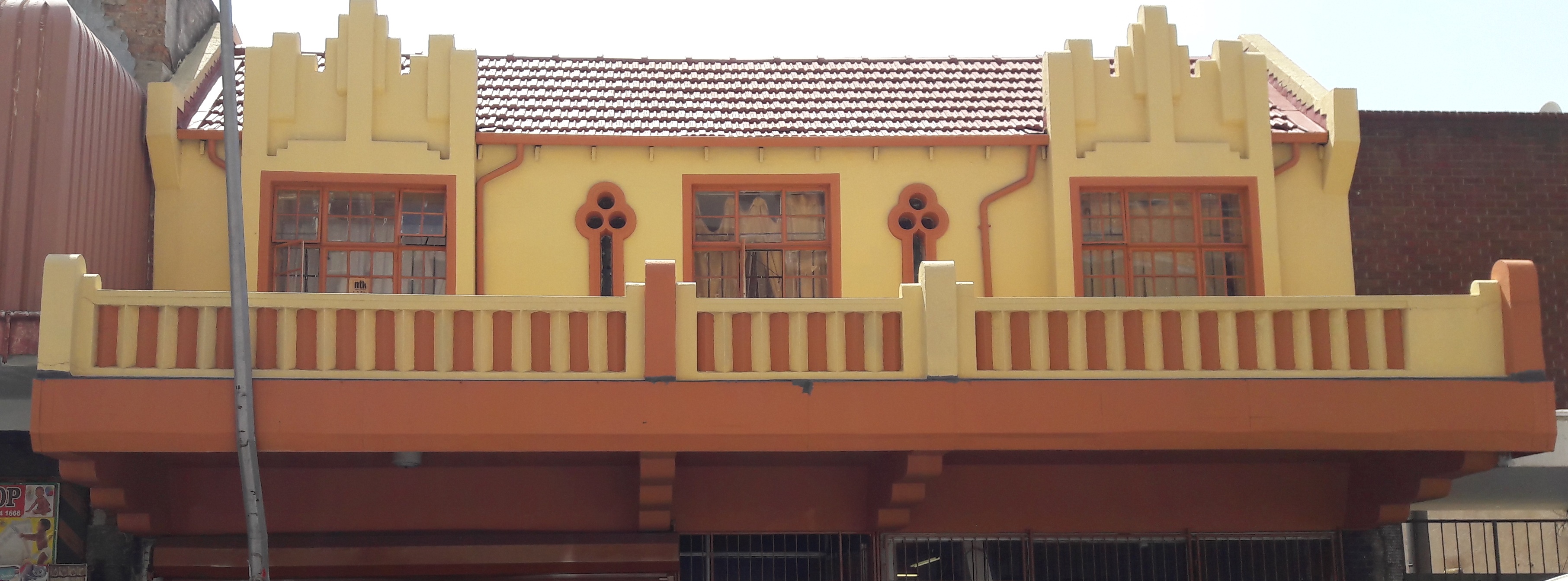
Façade of Winsor Mansions. Image: Barbara Adair and Sreddy Yen
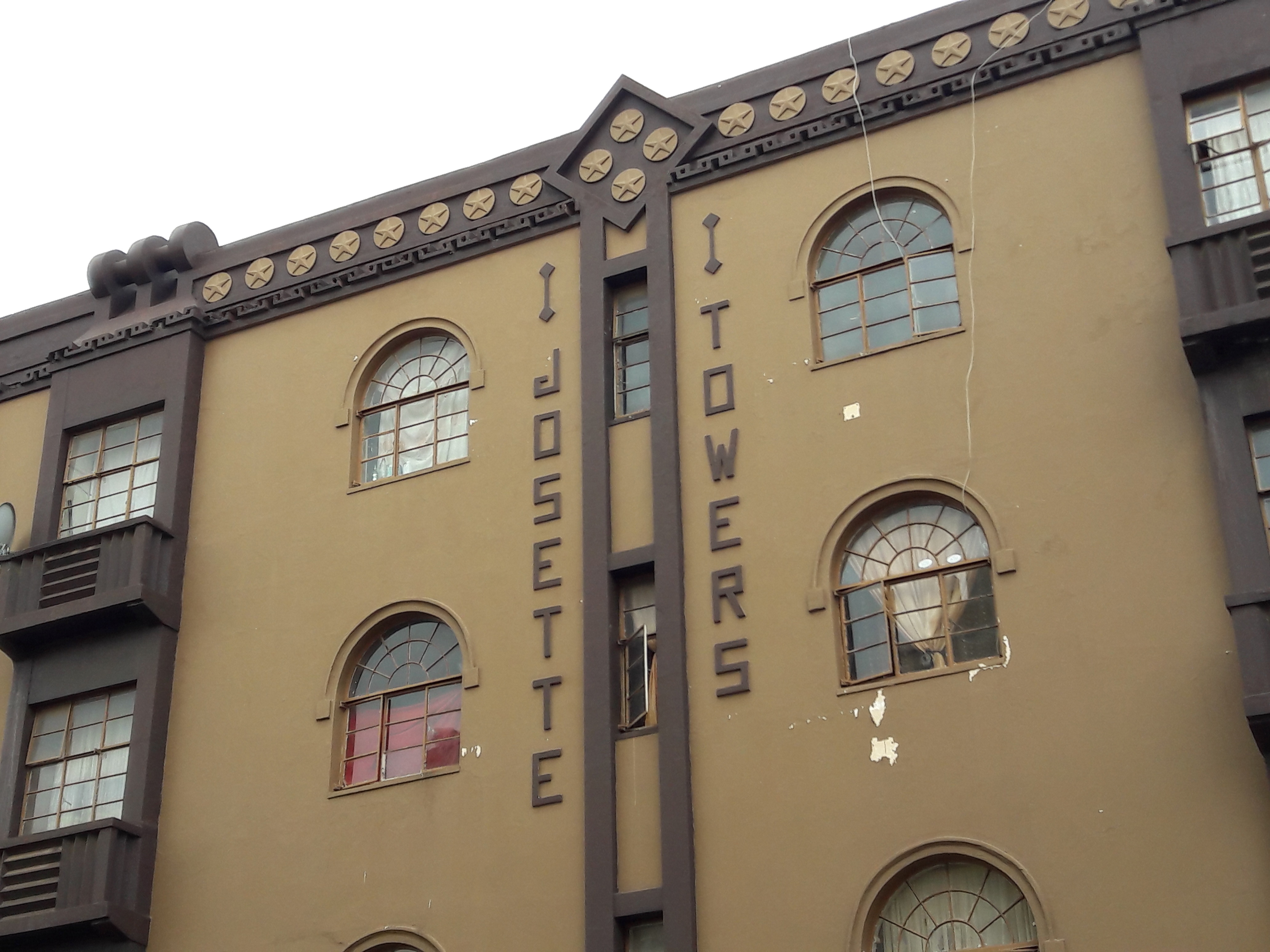
Façade of Josette Towers where Debs lives with her mother. Image: Barbara Adair and Sreddy Yen
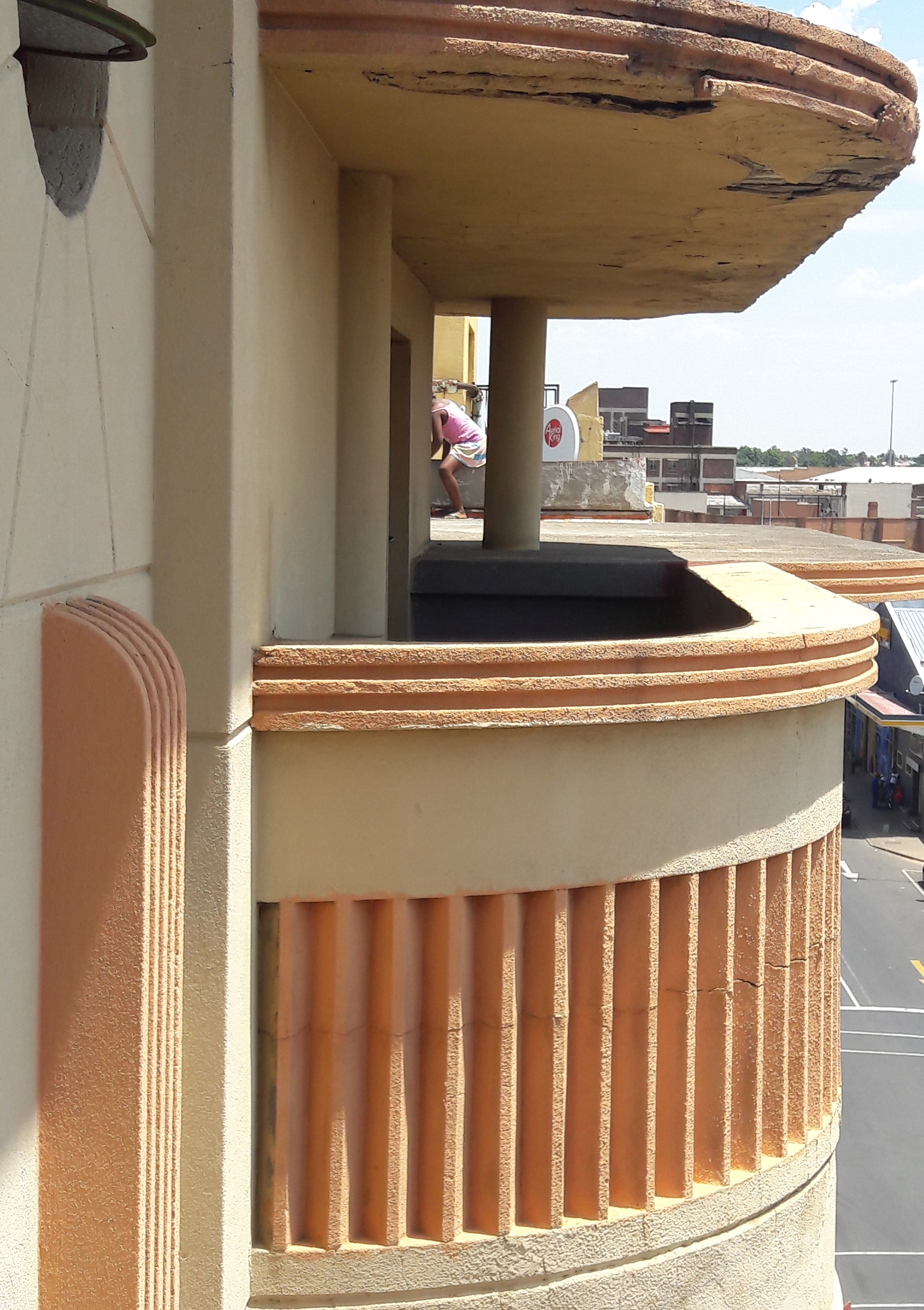
A child sits on the balcony of Manitoba House. This is where the Nigerian prostitute, referred to in extract, and the latch key child lives. Image: Barbara Adair and Sreddy Yen
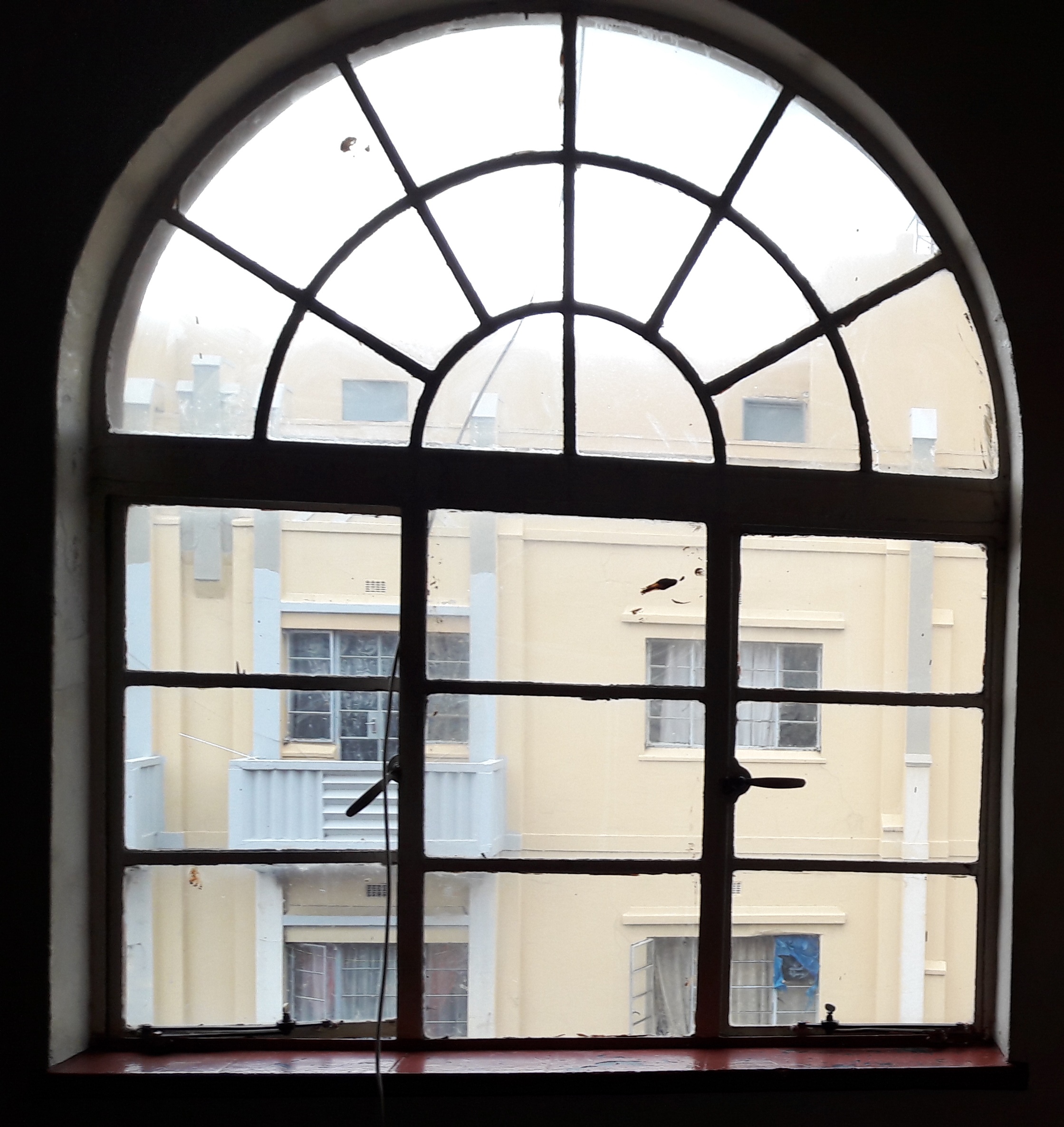
Oval wrought iron window frame in Marie Court. Downstairs there is a traditional medicine shop in which a Ugandan woman lives. Image: Barbara Adair and Sreddy Yen
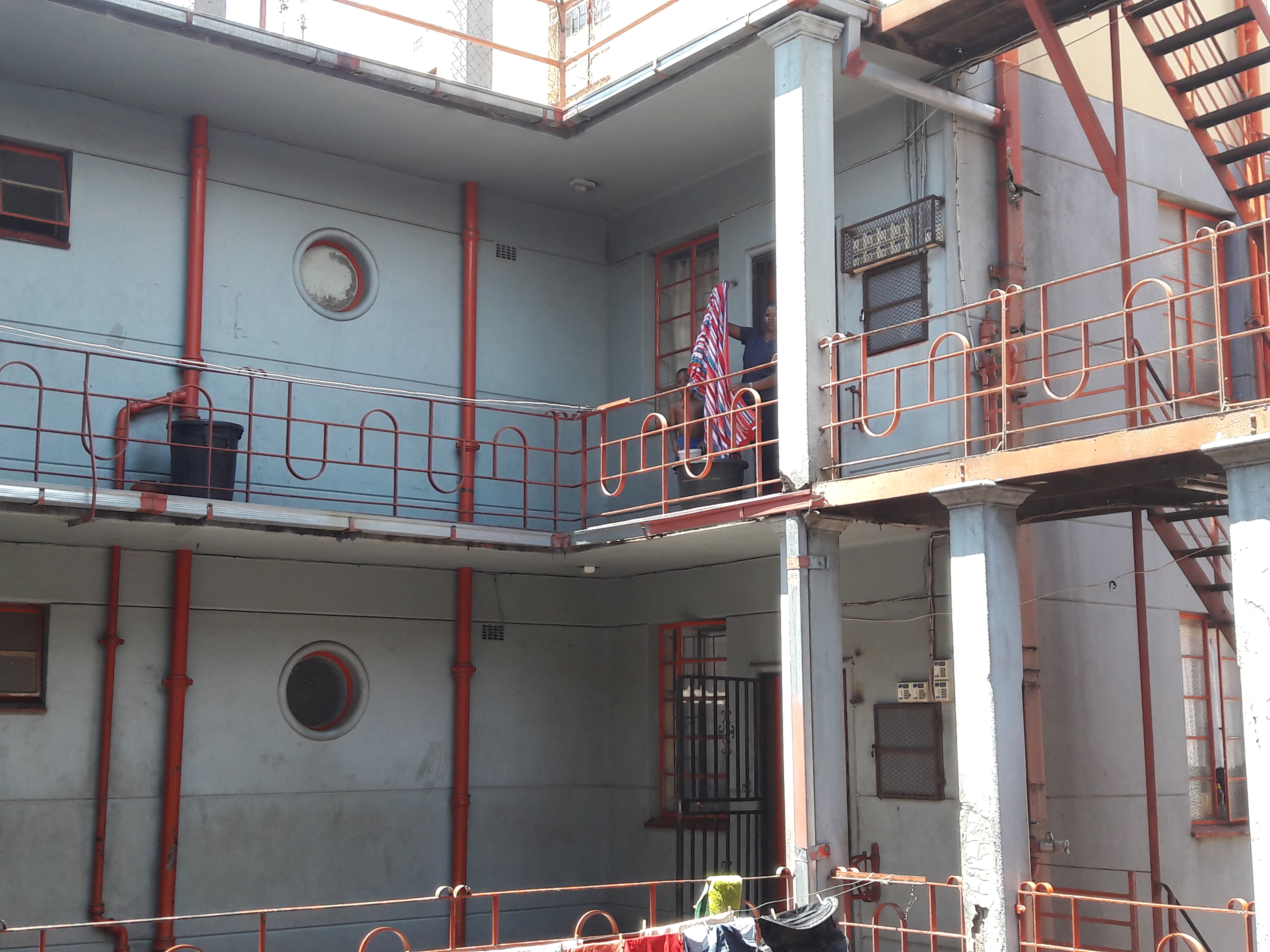
The inside courtyard of Coalition House. It is empty and littered. Above this on the rooftop hangs washing of myriad colours. Image: Barbara Adair and Sreddy Yen
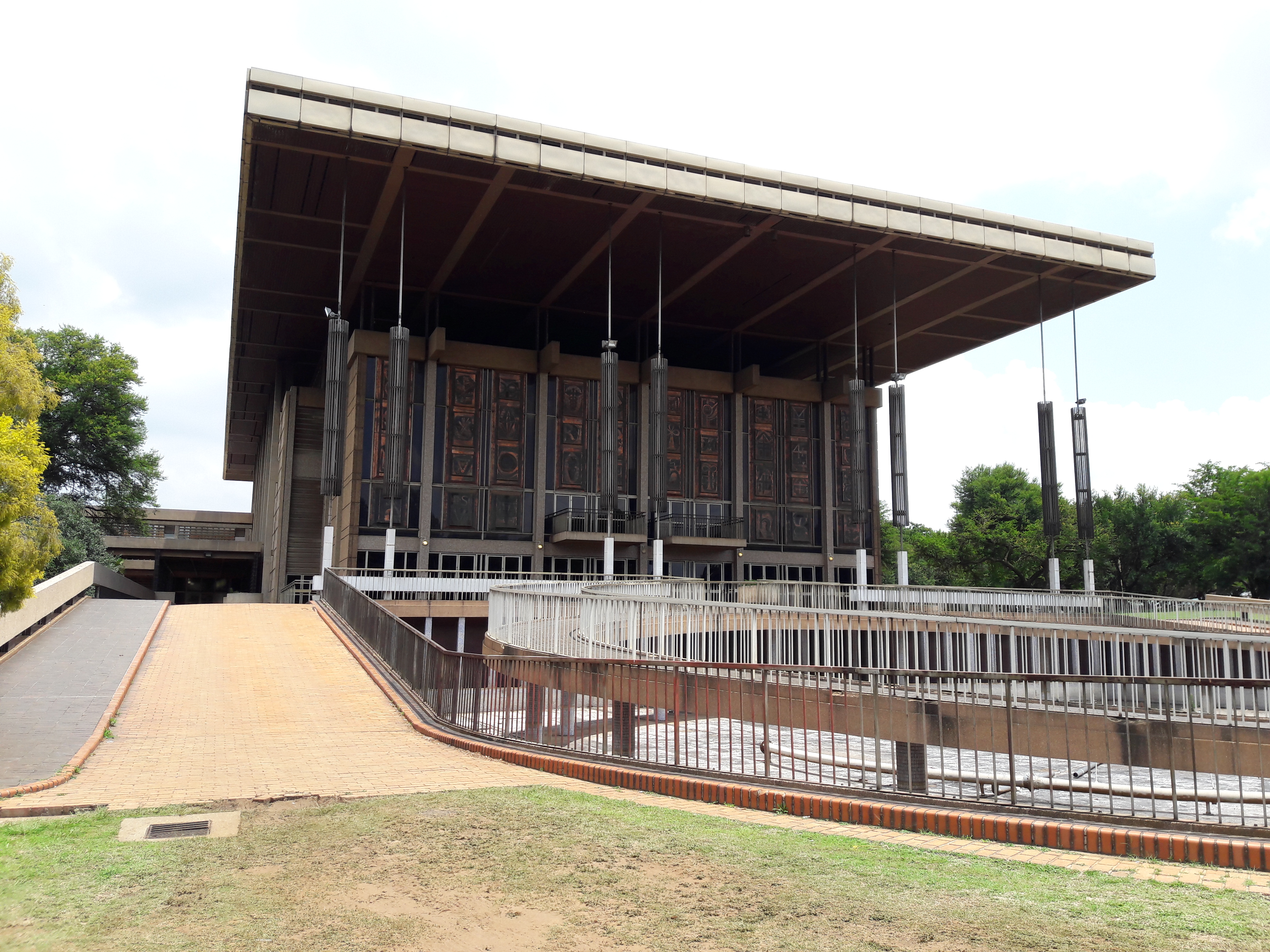
Streamline modern façade of the Springs Town Council. Image: Barbara Adair and Sreddy Yen
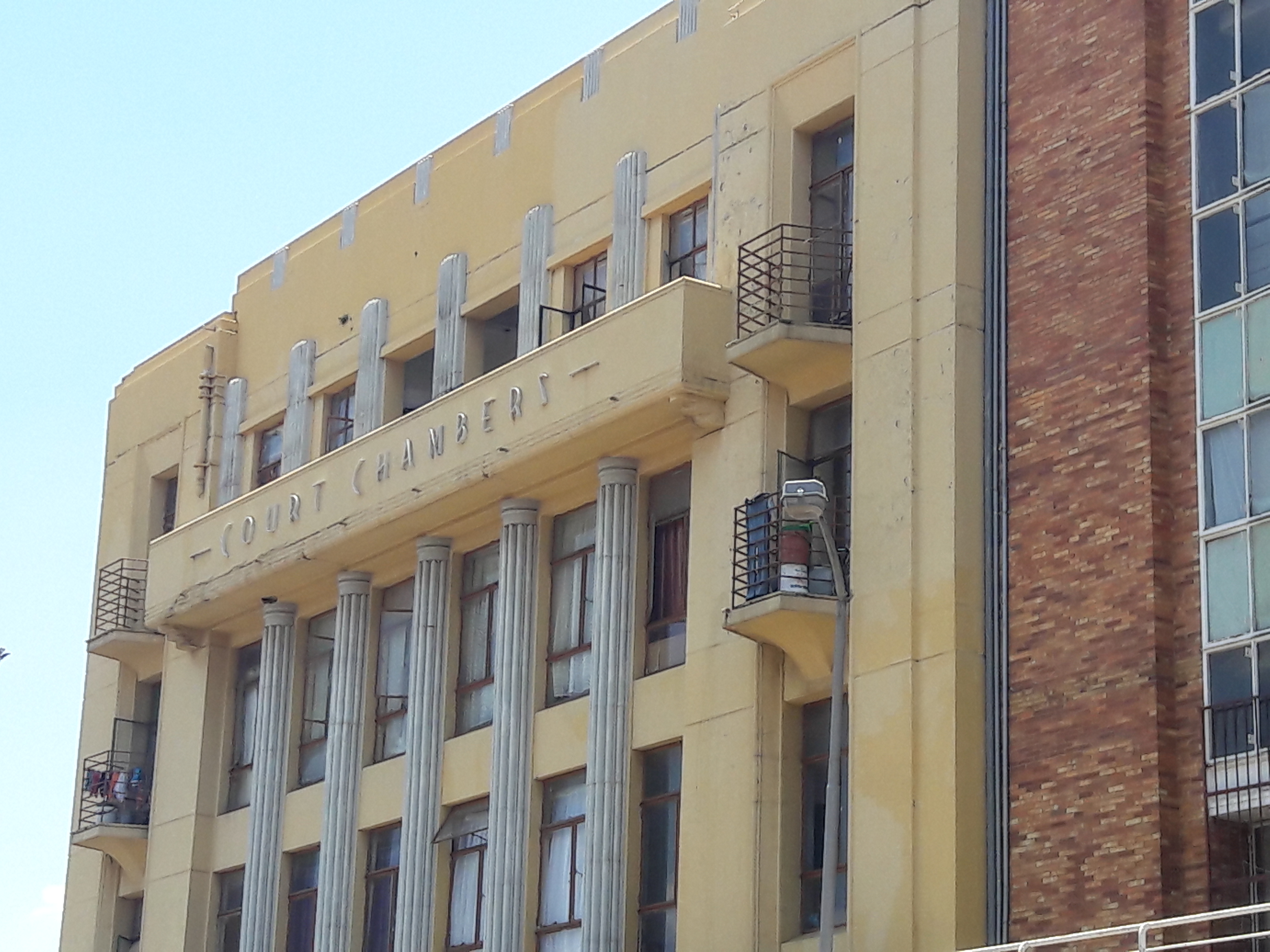
Façade of Court Chambers with elegant concrete twirled pillars reaching to the sky. Many of the children spoken to live here. Image: Barbara Adair and Sreddy Yen
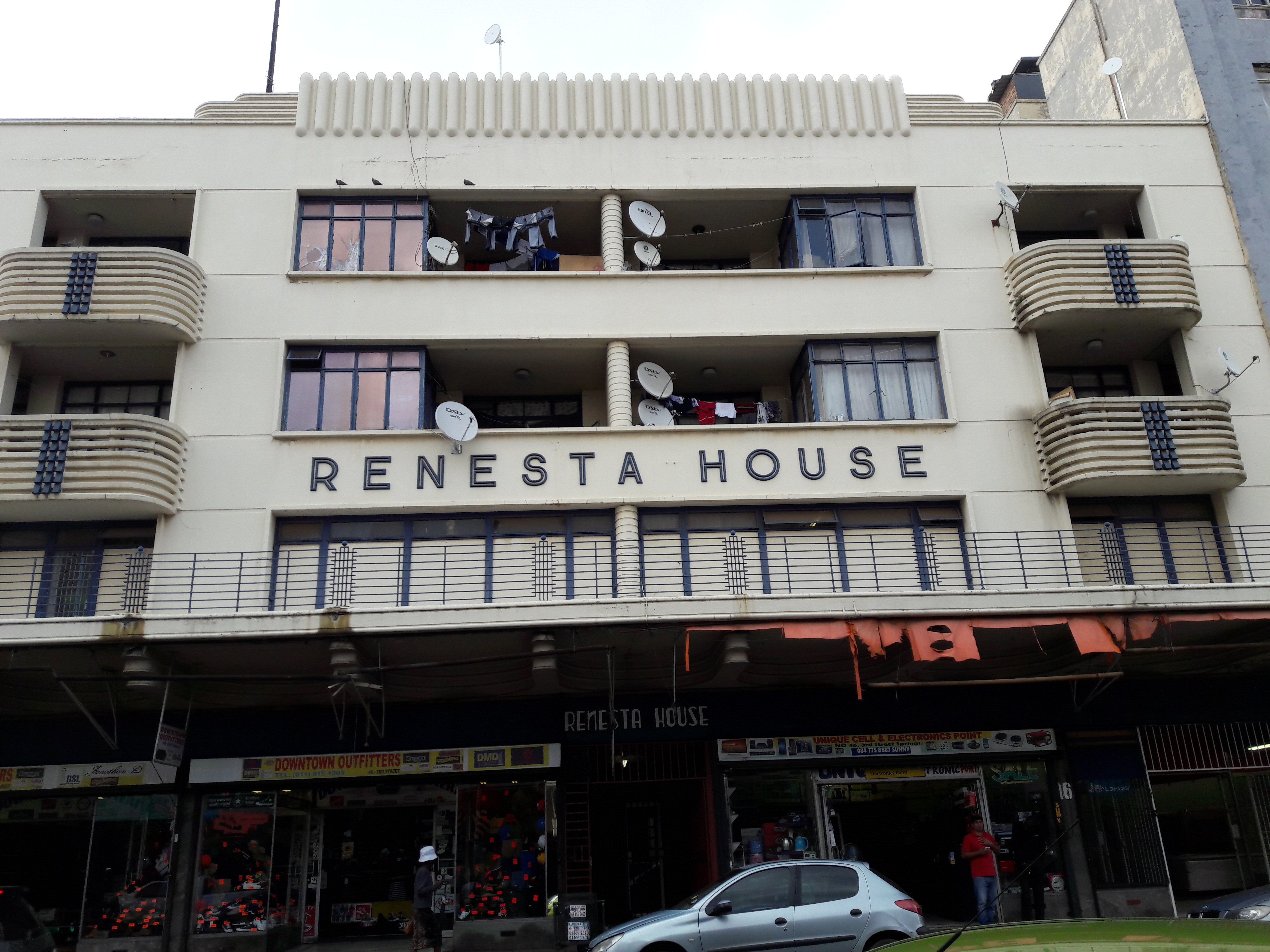
Façade of Renesta House. Across the road, Nazeem has his fast food outlet. Image: Barbara Adair and Sreddy Yen
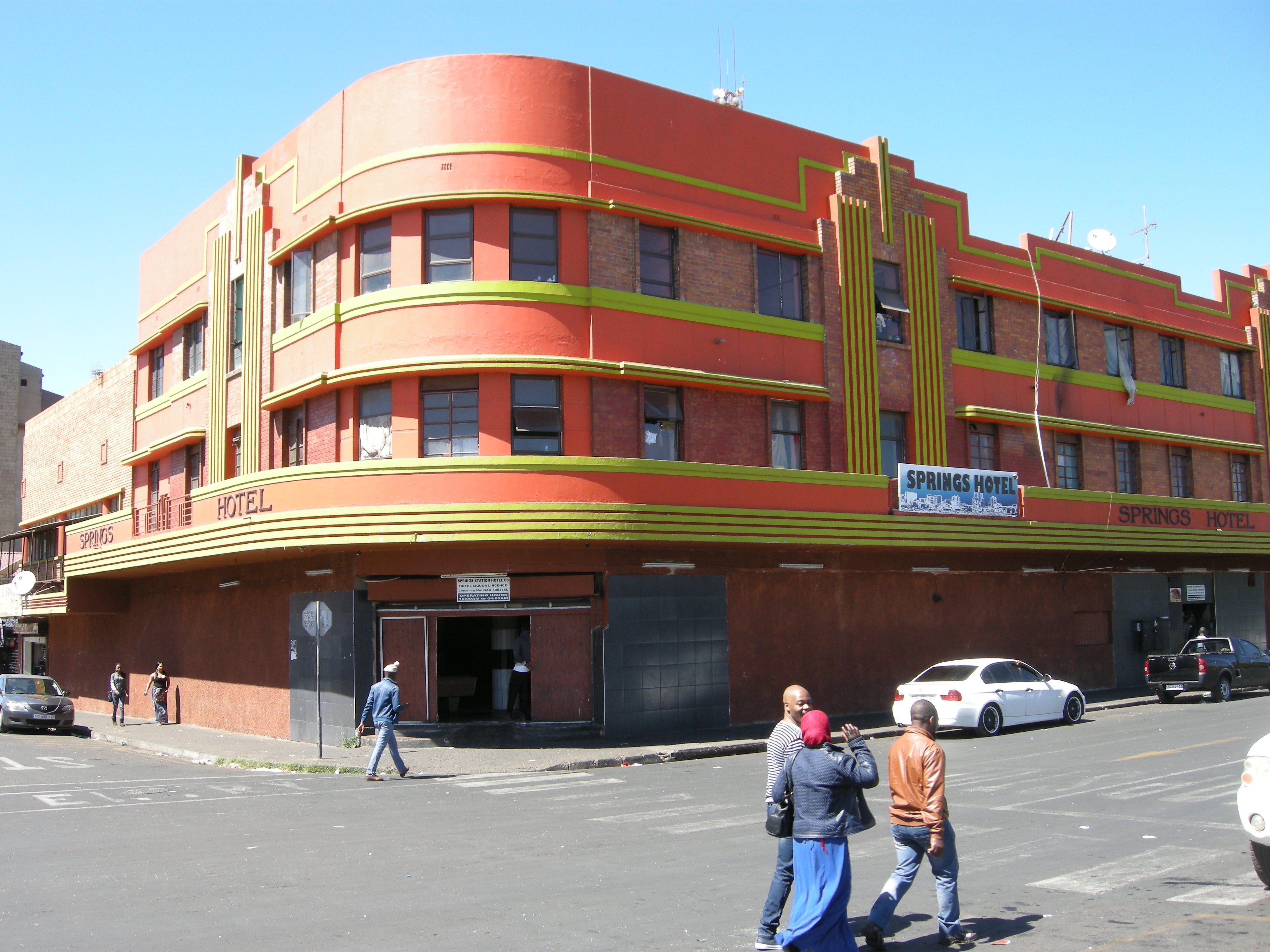
The Springs Hotel where the downstairs bar is a brothel and the rooms can be rented by the hour. Image: Barbara Adair and Sreddy Yen
I love the building, I love how the balcony curves, it like wraps around a body, my body when I sometimes stand outside and look at the street, it is as if it just hugs me close to the brickwork. It is my place, I never bring clients home, they stay there, at the hotel, this is my place, for only me. Sometimes my boyfriend comes round, he is Tunisian, but he does not live here, I don’t want him to live here, I like being alone sometimes. He has shown me pictures of Tutankhamen, the Egyptian pharaoh that died very young and whose tomb was found by some archaeologists. Egypt is close to Tunisia, that’s how my boyfriend knows about this. My building reminds me of the pictures of Tutankhamen, his mask in death, it is not gold and blue it is red, but the way the curves look is the same. And look at the way the walls stretch into a point, someone told me that it is built like a pyramid carved out of stone. And look, look at these circles of steel on the railing of the stairs, circles of stainless steel, Tutankhamen’s eyes. And look, look there at the side, it flies, that there, that part, is the wings. My boyfriend says that the dead pharaohs flew out of their bodies and into the spirit world. I sometimes do this when I sit on the balcony and look at the sky.
I earn enough money to have a good time. I like this town.
Why do you ask if I miss Banjoko? No, I don’t.
Why do you ask if I miss my mother? No, I don’t.
I don’t miss anything.
Lagos is just another place.
I don’t cry for home because this, this is my home. Why would I think of Banjoko as home, it isn’t? DM/ML
In the Shadow of the Springs I Saw by Barbara Adair is published by Modjaji Books and retails for R290.
Barbara Adair is the author of the novels In Tangier we Killed the Blue Parrot and End. She is currently working with the Wits Writing Centre at the University of the Witwatersrand.



















Comments - Please login in order to comment.